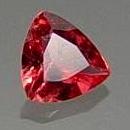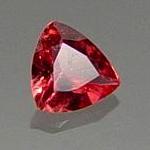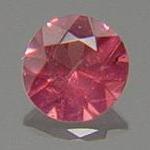|
Click on a letter above to view the list of gems. |
|
|
|
|
|
|
|
|
Eudialyte |
|
| Chemistry: Na4(Ca,Ce)2(Fe++,Mn,Y)ZrSi8O22(OH,Cl)2 | |
| Discovered
in 1819;
IMA
status: Valid (pre-IMA; Grandfathered). | ||
|
| ||
|
Classification |
|
|
| |
|
Silicates | |
|
|
8 : Silicates |
|
|
|
|
Crystal Data |
|
|
|
|
|
Crystals short rhombohedral to long prismatic up to 10 cm. More commonly as irregular masses and vein filings. |
|
|
|
|
|
Physical Properties |
|
|
|
|
|
[0001] Imperfect |
|
|
Uneven |
|
|
Brittle |
|
|
5.0 - 5.5 |
|
|
2.74 - 3.10 (g/cm3) |
|
|
Mild; GRapi = 7,287.91 (Gamma Ray American Petroleum Institute Units) |
|
|
|
|
|
Optical Properties |
|
|
|
|
|
Pinkish red, Red, Yellow, Yellowish brown, Violet. |
|
|
Transparent to Translucent |
|
|
Vitreous to dull (greasy) |
|
|
1.606 - 1.613 Uniaxial ( + or - ) |
|
|
0.003 - 0.010 |
|
|
n/a |
|
|
Weak |
|
|
|
|
|
Occurances |
|
|
|
|
|
Geological Setting: |
PIn nepheline syenites, alkalic granites, and associated pegmatites; may be a major constituent, of both magmatic and late-stage pneumatolytic origin. |
|
Type Locality: |
Kangerdluarssuq (Kangerdluarsuk) Firth, Ilimaussaq complex, Narsaq, Kitaa (West Greenland) Province, Greenland |
|
Year Discovered: |
1819 |
|
View mineral photos: | |
|
|
|
|
More Information |
|
|
|
|
|
| |
|
|
|
|
|
|
|
||||||||||||||||||||||||||||||||||||||||||||||||||||||




